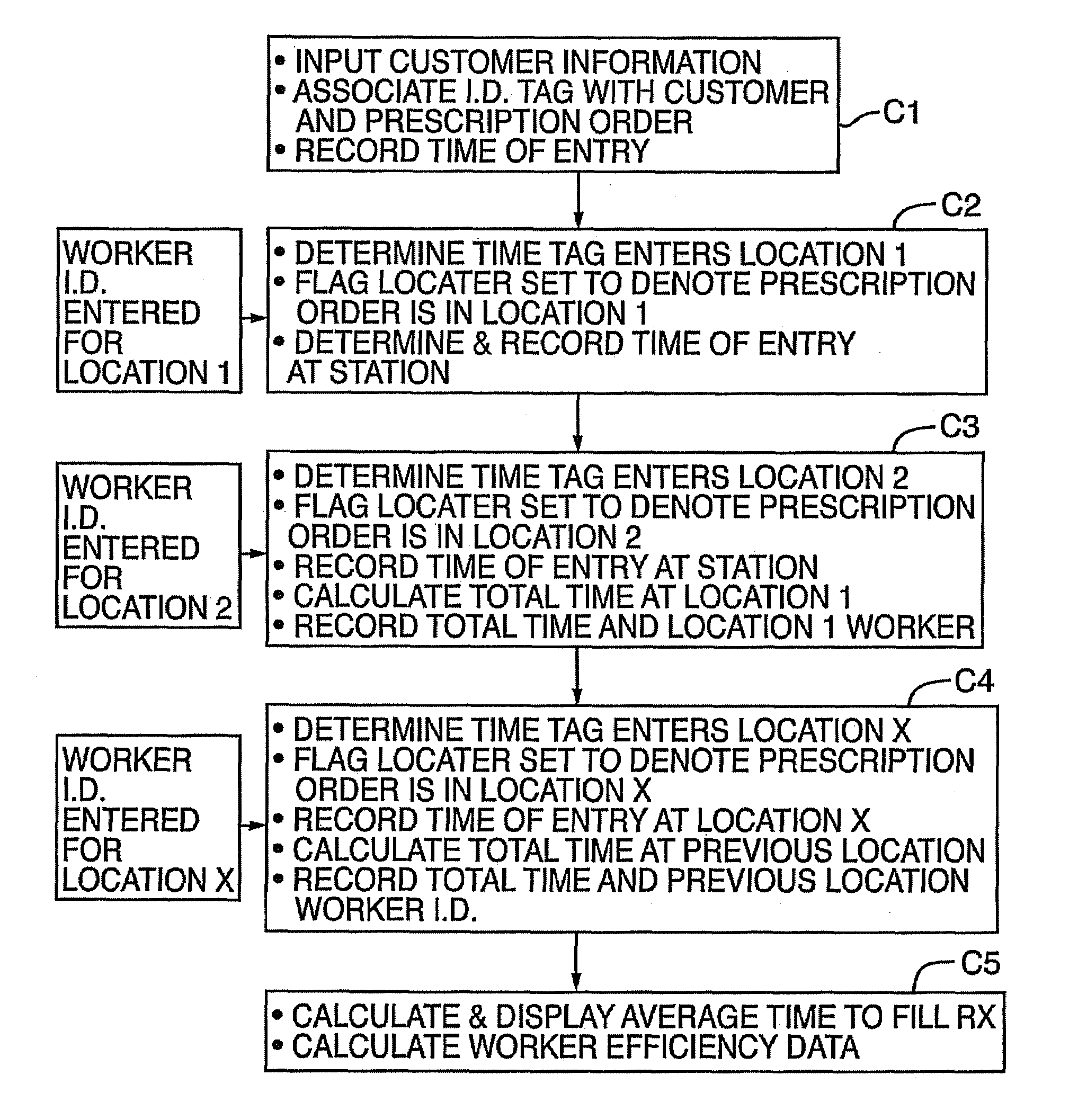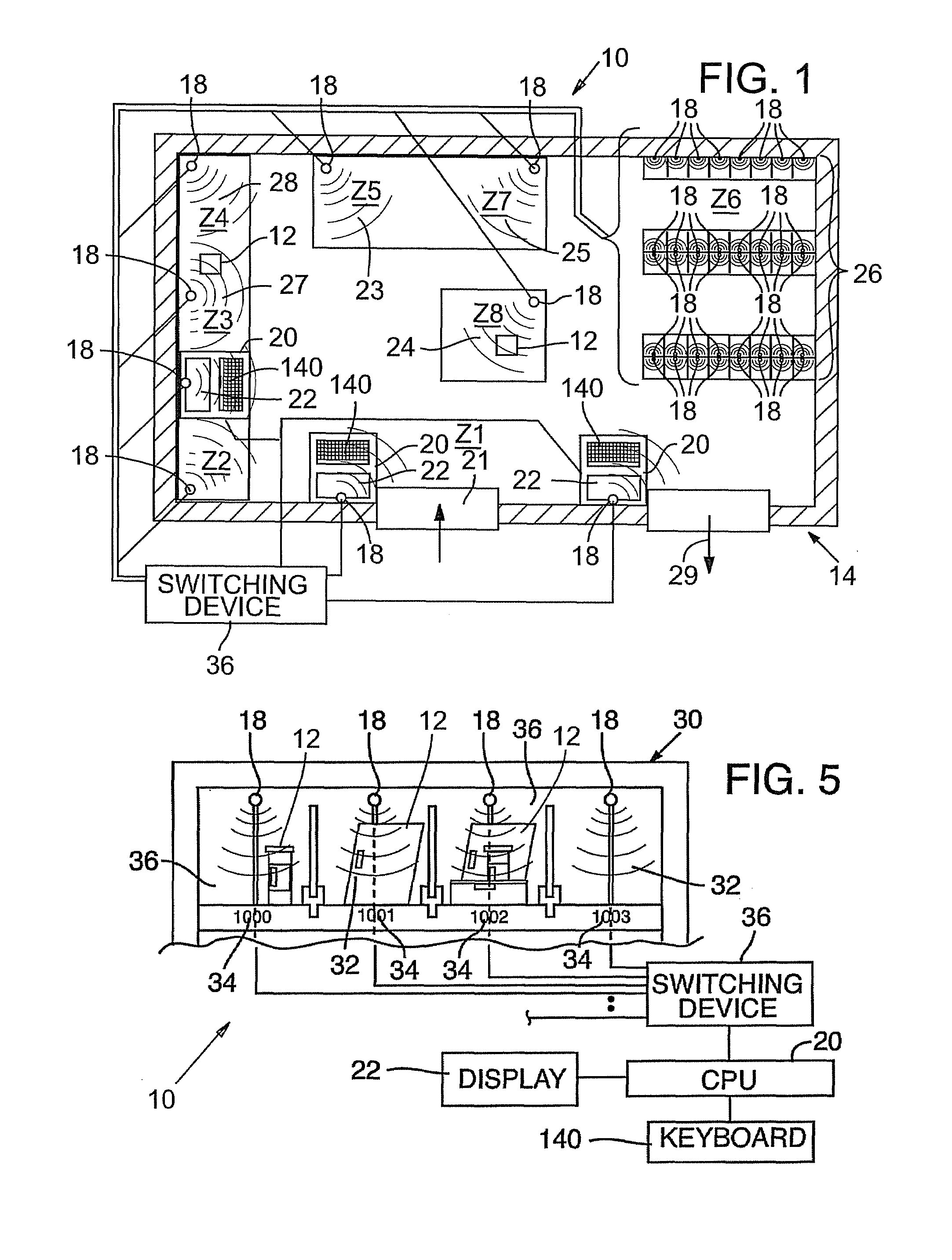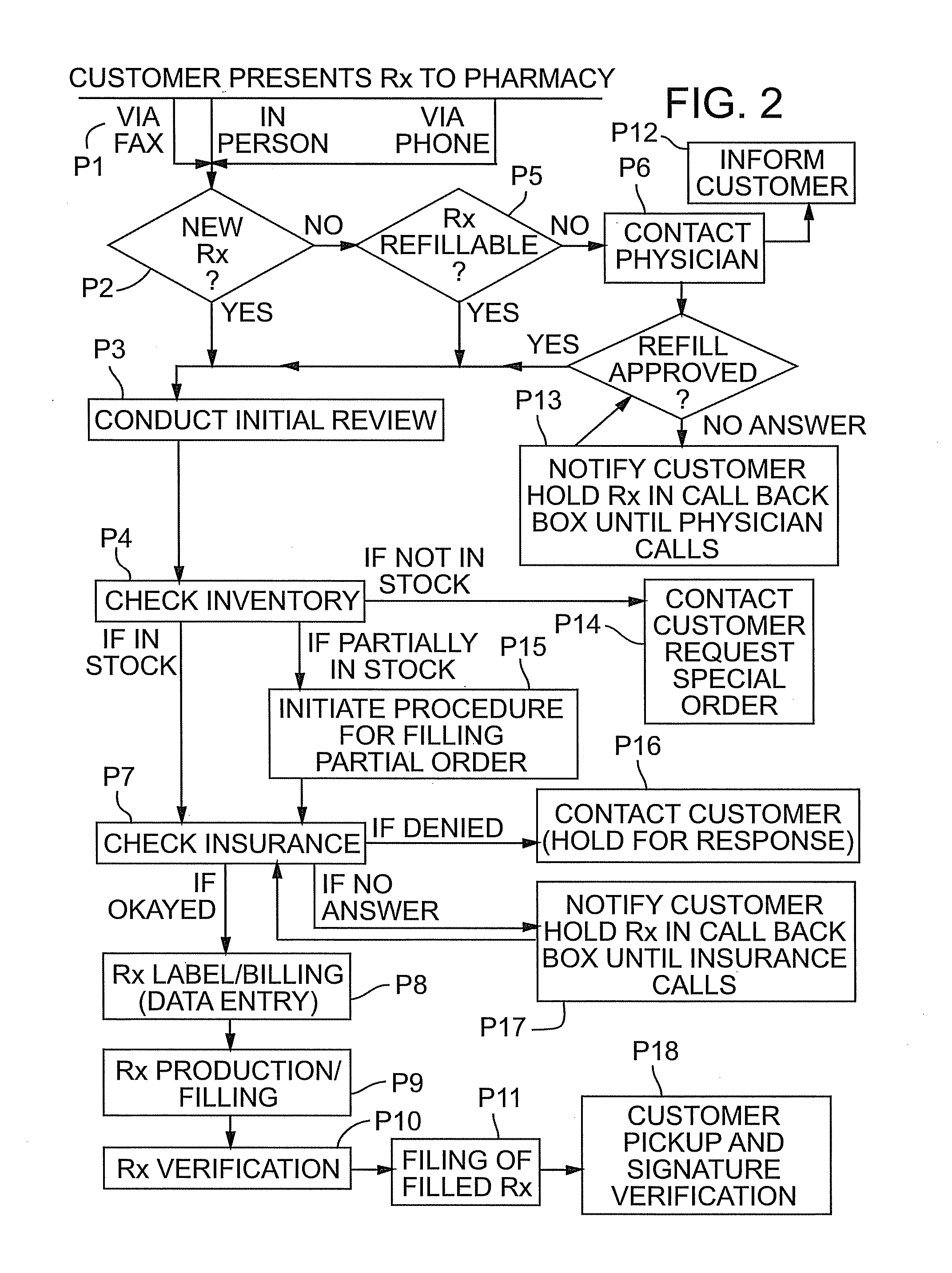Prescription order position tracking system and method
a prescription order and position tracking technology, applied in the field of system for tracking physical prescription orders, can solve the problems of large order volume, large variety of additional, and second clerks often having no way of knowing the current status, and achieve the effect of quick and easy determination
- Summary
- Abstract
- Description
- Claims
- Application Information
AI Technical Summary
Benefits of technology
Problems solved by technology
Method used
Image
Examples
Embodiment Construction
[0024]An economical and automatic prescription order tracking system 10 that monitors and tracks prescription orders 12 through a pharmacy 14 is shown in FIGS. 1-8
[0025]In general and as best shown in FIGS. 1, 3, and 5, a prescription order 12 is presented to the pharmacy 14 and assigned an identification tag 16. Tag reading devices 18 are positioned at key locations throughout the pharmacy 14 and in communication with a computer system 20 having a display 22, such that the movement of the prescription order 12 throughout the pharmacy 14 automatically detects and records the location of the tag 16 without further worker input. Accordingly, a worker can easily determine the location of the prescription order 12 within the pharmacy by entering commands in the computer system 20 with a user input device such as a keyboard 120 to display the location of the prescription order 12 on the computer display 22. The individual elements forming the present invention are discussed in greater de...
PUM
 Login to View More
Login to View More Abstract
Description
Claims
Application Information
 Login to View More
Login to View More - R&D
- Intellectual Property
- Life Sciences
- Materials
- Tech Scout
- Unparalleled Data Quality
- Higher Quality Content
- 60% Fewer Hallucinations
Browse by: Latest US Patents, China's latest patents, Technical Efficacy Thesaurus, Application Domain, Technology Topic, Popular Technical Reports.
© 2025 PatSnap. All rights reserved.Legal|Privacy policy|Modern Slavery Act Transparency Statement|Sitemap|About US| Contact US: help@patsnap.com



